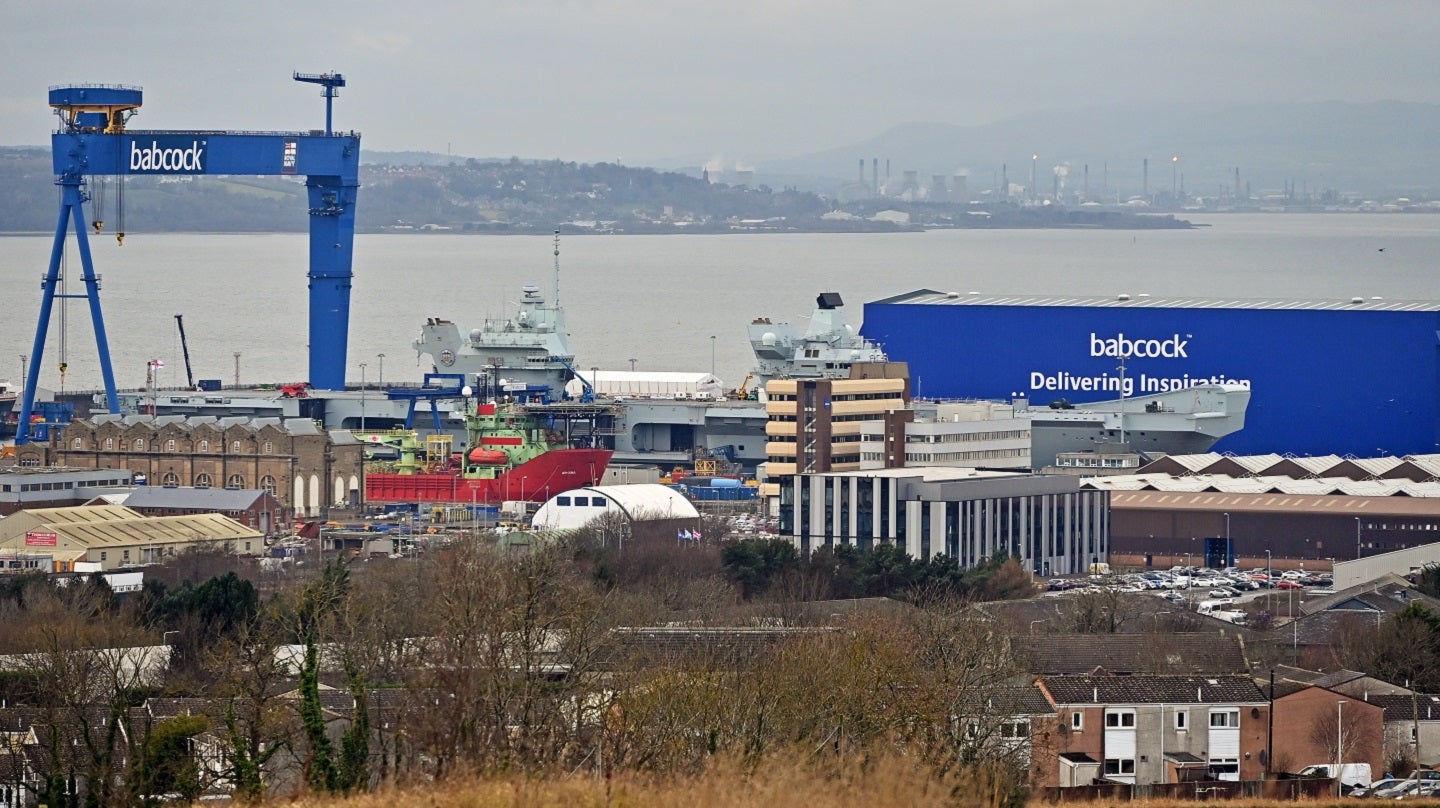
In the 1,252 days since the UK’s largest and newest aircraft carrier, the 65,000-ton HMS Prince of Wales, was commissioned into service the vessel has spent just 267 days at sea, with 411 days spent alongside or in dock undergoing repairs.
Commissioned into service in December 2019, issues appear to continue to persist for the vessel. In October 2020 HMS Prince of Wales sustained major flooding in its engine room following a burst fire main which caused significant damage to its electrical switchboards.
In total, the vessel spent 193 days undergoing repairs to the flooding damage.
The vessel is currently drydocked at Rosyth dockyard, where it was built, for rectification work to its starboard propellor shaft, after issues were discovered in August last year as HMS Prince of Wales embarked on landmark Atlantic crossing to participate in exercises off the US eastern seaboard.
After several weeks spent alongside the Princess Royal Jetty, where the vessel’s 33-tonne starboard propellor was removed, HMS Prince of Wales was dispatched, under reduced speed, to Babcock’s Rosyth Dockyard in the Firth of Forth for drydock repairs.
The at-sea and repair days figures were disclosed during UK parliamentary questions on 15 May by the Shadow Defence Secretary, John Healey MP, states that the vessel has spent nearly 33% of its time commissioned in the Royal Navy undergoing repairs.
How well do you really know your competitors?
Access the most comprehensive Company Profiles on the market, powered by GlobalData. Save hours of research. Gain competitive edge.

Thank you!
Your download email will arrive shortly
Not ready to buy yet? Download a free sample
We are confident about the unique quality of our Company Profiles. However, we want you to make the most beneficial decision for your business, so we offer a free sample that you can download by submitting the below form
By GlobalDataDays spent by HMS Prince of Wales at sea, as a percentage of days commissioned in service, amount to just 21.3%.
A Royal Navy spokesperson told Naval Technology that the service “remain committed” to ensuring that the carrier commences its operational programme as planned later this year.
“Since entering service HMS Prince of Wales has acted as the NATO Command ship, led the Maritime High Readiness Force in the Arctic and completed exercises with our allies and partner nations,” the spokesperson said.
Last month, it was reported by Naval Technology that the UK Ministry of Defence (MoD), was planned to make the aircraft carrier available for operational flying training and trials by the autumn.
In a parliamentary written response on 26 April, it was revealed by James Cartlidge, newly appointed Minister of State at the MoD, that the MoD “remains committed” to ensuring that HMS Prince of Wales is able to undertake its planned operations in the autumn.
Further, Cartlidge said that there was “no impact” on the schedule for HMS Queen Elizabeth, sister ship of HMS Prince of Wales, as the latter vessel conducts “repairs and routine maintenance”.
Operationally, HMS Prince of Wales was not due to spend much time at sea in the first half of 2023, with time being spent undertaking communications upgrades and improvements to further enable shipborne-rolling-vertical-landing, a technique that enables the F-35B multirole fighter to land on a more traditional glide path, rather than vertically.
As part of its planned deployment to the US eastern seaboard, the aircraft carrier was due to host the Atlantic Forum, a major UK-US conference, in the waters off New York. Forced to return to port, HMS Prince of Wales was replaced by HMS Queen Elizabeth for the deployment in Q4 last year.
[Edit note: This story has been updated to include a response from the UK Royal Navy]







